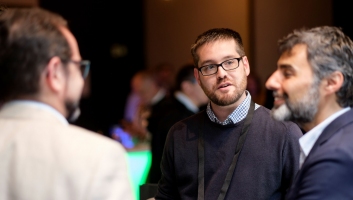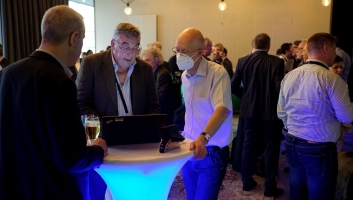Kick-start of a new Photonics Strategy Process, roadmapping the next decade for a key enabler for technologies like quantum, artificial intelligence and robotics.
In his introduction, Photonics21 President and Managing Director of the Mahr Group Lutz Aschke showed that light-based technologies are indispensable for powering the European digital economy. Collaboration with other partnerships and the European Commission Missions are underway and will form joint initiatives in the future.
Werner Steinhögl, Head of Sector for Photonics in the European Commission, explained in his evening keynote the implications of the European Chips Act and where photonics will play a key part in its programme.
In the second part of the evening reception, the focus was on technological sovereignty and deep-tech financing. Hermann Hauser, founder of Amadeus Capital Partners and initiator of the European Innovation Council, stated that Europe has still a long way to go in deep-tech as "the amount of venture capital relative to GDP in Europe is still only a quarter of that in the US."
In the same line of thought was the presentation by Brendan McDonagh, Senior Advisor at the European Investment Bank, who explained the European Investment Bank's capabilities for early-stage and growth-stage financing.
Kick-off for new Strategic Research and Innovation Agenda
Workshop Sessions were the focus of the Annual Meeting's Day two. They kicked-off the process for a new multi-annual Strategic Research and Innovation Agenda (SRIA) for the second half of Horizon Europe.
The basis of this new strategic roadmap is the previous version, published in 2020: "New Horizons - Securing Europe's technological sovereignty through Photonics". Changes in the political, technical and socio-economic framework conditions have made a reworked version necessary.
The workshop sessions heard contributions from selected projects which are funded under the Photonics Partnership. DEEPER, a tool for cell-type specific targeting of neural diseases, GRACED, a new ultrasensitive detector able to spot the tiniest traces of pesticide or bacteria within minutes, and TERIPHIC, which develops optical interfaces with Terabit capacity for datacom applications, all gave updates on their progress.
Follow-up workshops to define the chapters of the new research and innovation agenda will be held in Autumn this year.












